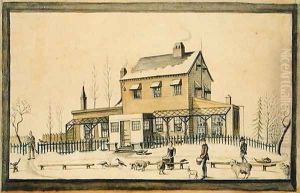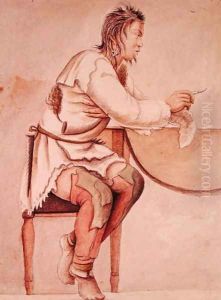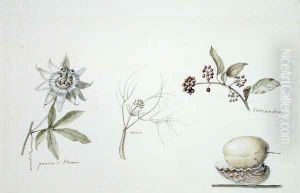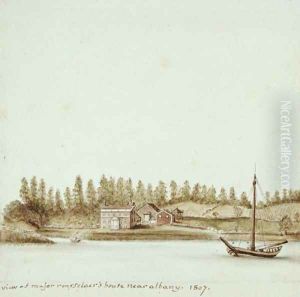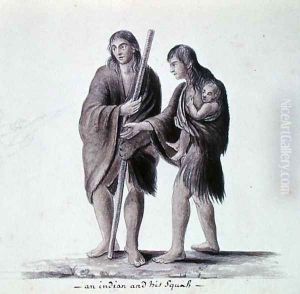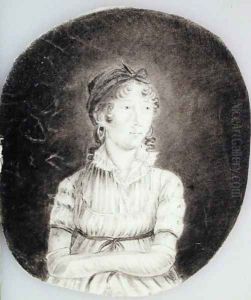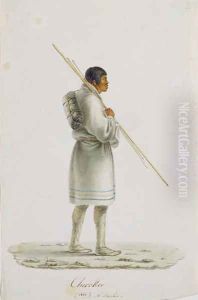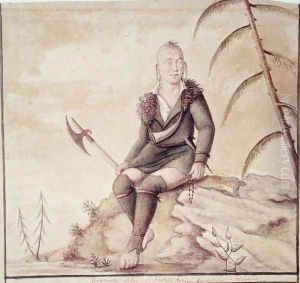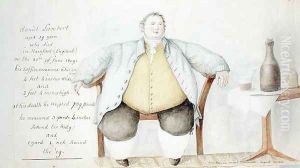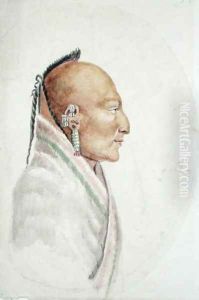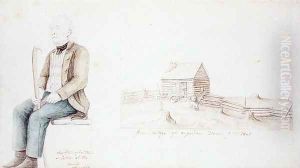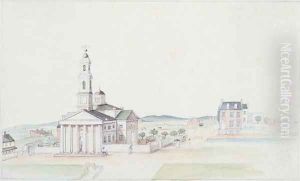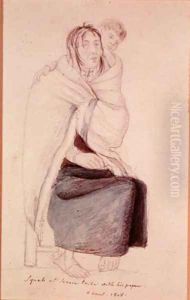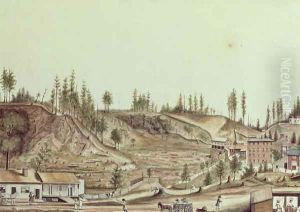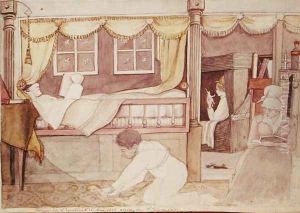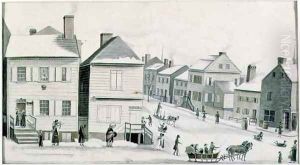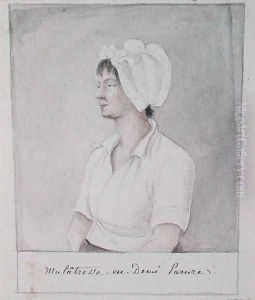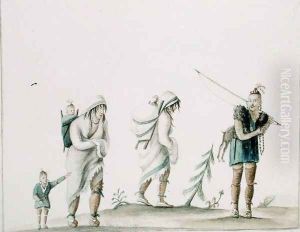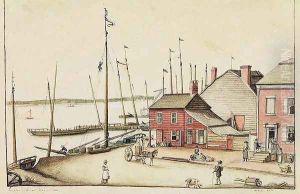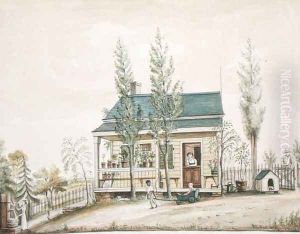Anne Marguerite Hyde de Neuville Paintings
Anne Marguerite Hyde de Neuville was a French artist known for her watercolors and drawings, particularly those documenting the people and scenes of early 19th-century America. Born in 1771 in a rural area of France, her full name was Anne Marguerite Joséphine Henriette Rouillé de Marigny Hyde de Neuville. She was the daughter of a French aristocratic family that was nearly ruined during the French Revolution.
Despite the tumultuous times, Anne Marguerite married Jean-Guillaume Hyde de Neuville, a royalist who was involved in political intrigue against the revolutionary government. The couple was forced into exile and ultimately arrived in the United States in 1807, where they lived until 1814. During her time in America, Anne Marguerite Hyde de Neuville became an important chronicler of life in the early republic, capturing in her artwork a wide array of subjects, from urban views to the everyday lives of Native Americans, African Americans, and settlers.
Her work is significant not only for its artistic merit but also for its historical value. Hyde de Neuville's drawings and watercolors are some of the earliest visual records of many aspects of early American life, including images of the interiors and exteriors of buildings, portraits of prominent figures, and depictions of social and domestic activities. She had a keen eye for detail and a talent for capturing the individuality of her subjects, making her works valuable resources for understanding the era.
After their return to France in 1814, her husband served as the French ambassador to Portugal and later as the Minister of the Navy and the Colonies. During this period, Anne Marguerite continued her work, often drawing and painting scenes from her travels and her surroundings. Despite her prolific work and the significant historical value of her oeuvre, Anne Marguerite Hyde de Neuville's contributions to art were relatively overlooked until the late 20th and early 21st centuries.
Hyde de Neuville passed away in 1849, but her legacy endures through her detailed and insightful portrayals of her time. Her works are preserved in various institutions, including the New-York Historical Society, which holds a substantial collection of her drawings and watercolors. In recent years, there has been a growing appreciation for her contribution to the visual documentation of early American history and French society during her lifetime.
